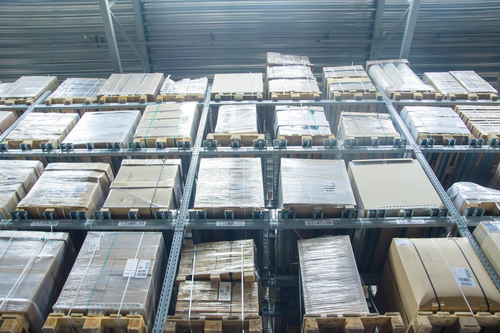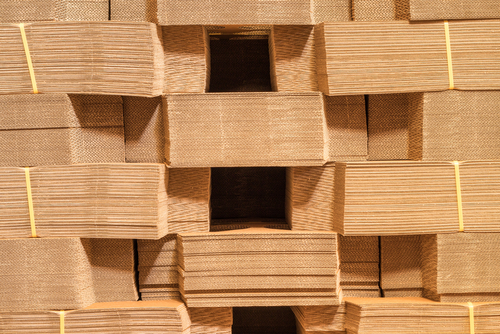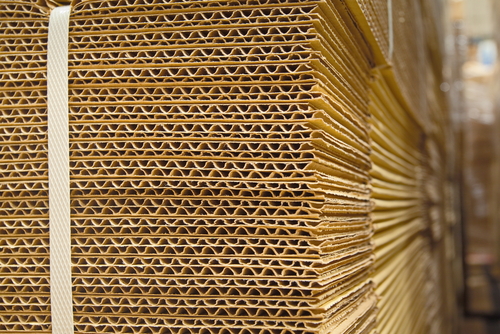
Gaylord boxes are large, corrugated pallet boxes typically used to ship bulk items. Although named after the manufacturer who made them, they’re now widely available from multiple manufacturers.
Whether they are called bulk bins, bulk boxes, pallet boxes, or pallet containers, the purpose remains the same. Outfitted appropriately, they can even store liquids and waste.
You’ve likely seen them on the shelves and floor at warehouse stores like Costco, where you buy consumer goods in bulk. For example, a box of pumpkins would just be opened at the top, so customers could reach in and select straight from the container.
Some are the size of a child’s playhouse and often are repurposed for another use.
Gaylord boxes are particularly useful for holding bulk materials that will later be processed or divided into smaller packages.
Shippers often mount these sturdy and supportive boxes, usually made from multiple layers of corrugated cardboard, directly to a pallet. This makes them ideal for holding large quantities of loose material.
Consumers and shippers can reuse Gaylord boxes manufactured from sturdy materials like plastic or metal. Gaylord boxes are incredibly versatile.
Origins
The boxes are named after Robert Gaylord, who purchased the J.C. Bulis company in 1920 and renamed it after himself. His nephew, Clifford W. Gaylord, became president of the firm in 1925, filing several patents related to shipping.
The company began to produce and market large pallet-mounted boxes that were so successful that the company re-branded itself as the Gaylord Container Corporation.
Today, after several buy-outs, mergers and take-overs, International Paper owns the company.
Multiple Sizes
Since Gaylord boxes mount on top of metal, wood, or plastic pallets for transport, they come in numerous sizes to match common pallet dimensions. Most range in size from 40-46 inches in length, 35-48 inches in width and 24-48 inches in height.
There are as many varieties as there are manufacturers, so occasionally you’ll even see an octagonal shape. The corrugated cardboard boxes are lightly reusable and recyclable, while the plastic and metal containers provide shippers with sometimes years of repeated use.
Sturdy Walls Hold Just About Anything
This adaptable cardboard storage box is popular because the walls are available in various thicknesses. Manufacturers create each layer from fluted corrugated sheets glued between sections of cardboard, ranging from two to eight layers.
The combination of size and wall thickness determines approximate weight capacity. Boxes with double- or triple-thick walls can typically hold around 1,000 pounds. Heavier contents may require a plastic version of the box that hold as much as 2,000 pounds.
If you have lightweight cargo or are looking for a long-term storage solution, consider repurposing a used Gaylord box.
Customization Makes Them Versatile
There are a lot of options to consider based on your product and transportation requirements. Gaylord boxes are popular because they can be customized to accommodate the type and weight of any intended contents.
The walls and floor can be reinforced with corrugated liners for extra strength for products that bulge, like powders, pellets, and grains. Plastic liners can be added to protect the contents from moisture damage that might occur if left in storage without environmental controls.
Sealed plastic bags with valves can even be ordered to hold and dispense liquid cargo. These handy workhorses can even be outfitted to ship recycling or waste without breaking down.
Some Gaylord boxes come preassembled and fixed in place. Others can be flattened, like a gift box, and assembled without glue or staples.
Tops and Bottoms
The boxes can be ordered with or without lids, depending upon the intended contents, while the full bottom Gaylord box comes in a variety of configurations to securely hold cargo.
Full flaps across the bottom securely hold small, dry cargo like powders and pellets. Partial flaps that don’t quite meet are a better choice for produce that needs extra ventilation but won’t fall out through the pallet. Partial flaps transform to a full flap by adding an optional slip sheet.
Tray bottoms allow users to assemble the box on top of the pallet, slotting the sides into place before locking the entire configuration together.
Whether you have a heavy, bulky liquid that needs a strong box, or a lightweight vegetable that needs ventilation, Gaylord boxes can satisfy most shipping and storage needs.
Boxes Are Stackable
These heavy-duty boxes can be stacked to save space when used for warehouse storage. Of course, be sure to check weight capacity, as well as lid and floor strength before stacking to avoid safety hazards.

